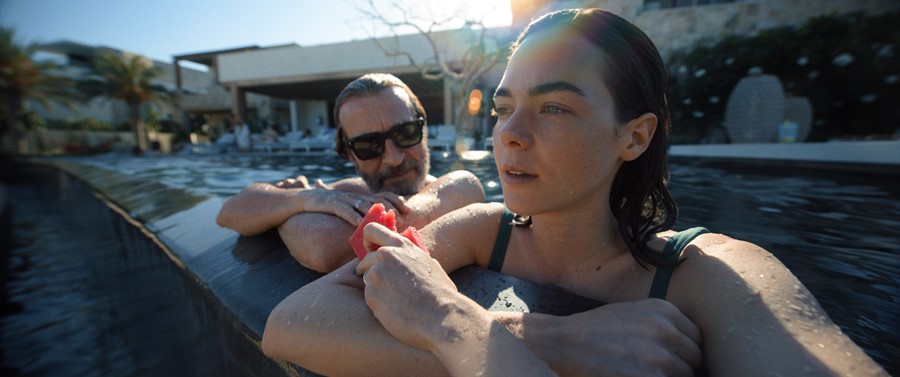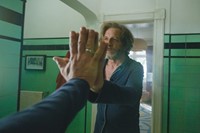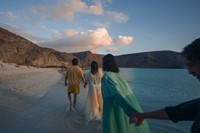Ahead of the Oscars, where he’s nominated for best cinematography, Darius Khondji talks about his masterful collaboration with director Alejandro González Iñárritu and why music and cinema are “intimately entwined”
“Cinema is a dream, directed.” Among this year’s Oscars hopefuls, none pay service to Luis Buñuel’s eternal words quite like Bardo, False Chronicle of a Handful of Truths. Alejandro González Iñárritu’s first film to be shot in Mexico since Amores Perros nearly 25 years ago is also one of his most ambitious, which, considering the scale of Birdman (2014) or The Revenant (2015), is some going. Unlike those previous triumphs, Bardo delves deep into the director’s personal history through a densely woven tale of unbridled fantasy and surrealism. Dreams, memory and premonition interchange with unerring fluidity in what is an indisputable visual triumph, fully deserving of its Academy Award nomination for Best Cinematography at this year’s ceremony.
There are few in the business who’d take on a project of such complexity, fewer still who could execute it like Darius Khondji. The veteran cinematographer has long shunned a visual signature in favour of moulding himself to a director’s vision – just ask Paul Thomas Anderson, Woody Allen, Roman Polanski, Bong Joon-ho, Wes Anderson, David Fincher, the Safdie Brothers – or any other director he has worked with over the last 40 years. Khondji’s approach to Bardo was no different, and like any of his previous collaborations, began with a conversation.
“Right from the beginning he was very articulate, very clear,” recalls Khondji of his first meeting with Iñárritu. “I understood, beyond words, the importance of what he was telling me and how important the film was for him. I think he felt that.” Any film is personal for a director, but for Iñárritu, Bardo goes much further, offering not so much a biographical account as a moment of catharsis, a chance to exorcise the trauma, insecurity and personal guilt that has weighed heavily over the last two decades. Iñárritu embodies his story through that of Silverio, a Mexican journalist turned filmmaker now living in LA, whose return to his native country precipitates an existential awakening and a reexamination of events that have led him to this moment.
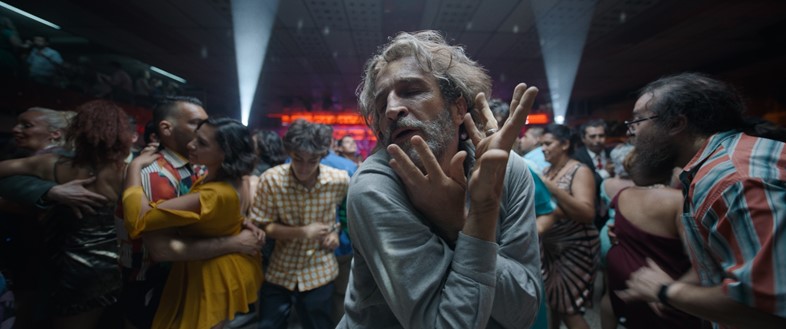
For Khondji, who was born in Tehran before moving to France at a young age, being caught between nationalities bore a personal resonance that helped fire his initial enthusiasm. Despite being just four when he arrived in Paris, he can still recall finding himself in a school, “surrounded by people who looked completely unlike me”, and resenting the feeling of being conspicuously other, “at a time when you just want to fit in”. Though he doesn’t share the same sense of guilt as Iñárritu (and, by extension, Silverio) over abandoning his birthplace in search of success, the intersection of two very different cultures was at once familiar.
Nowhere was this more apparent than in Mexico, where Khondji travelled during lockdown in preparation for the film. Given Bardo’s nuanced investigation of Mexican identity (in one scene Silverio converses with Spanish conquistador Hernán Cortés atop a pile of corpses, while in another, American and Mexican soldiers restage the 1847 Battle of Chapultepec), this affinity proved crucial. “I felt very close to Mexican people when I went there, in a very physical way,” explains Khondji. “Alejandro and I walked into downtown Mexico City and that was very important for me, as important as reading the script or being told about the movie. I felt very at ease there – it was the first place outside of Paris where I really didn’t miss Paris.”
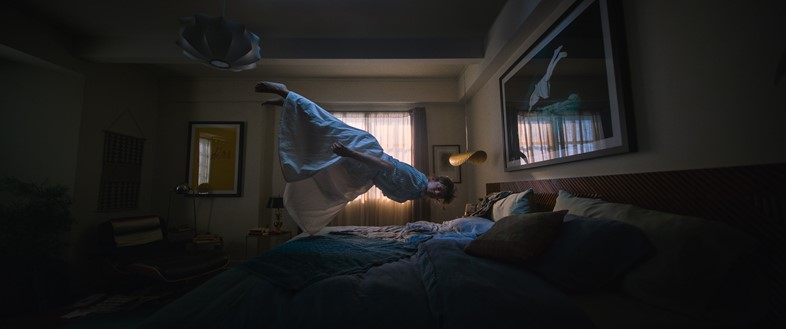
Whether it’s America and Mexico, fantasy and reality, life and death, this idea of liminality courses through Bardo, which, in Buddhism, refers to the state between death and rebirth. As such, Khondji’s lens moves with a fluidity and ease that shifts seamlessly between these dualities, often utilising long, continuous takes to navigate Fellini-esque dream sequences or grand set pieces redolent of Hollywood’s Golden Age. Khondji talks about camera movement like music, using terms like ‘rhythm’ and ‘tempo’ to explain his choices – an understanding that goes back to his work with Bong Joon-ho on Okja (2017). “Somewhere in the Korean countryside I had an epiphany,“ he says. “We were in the middle of a scene but we couldn’t get it right. We talked about music, about rhythm, and we looked at each other and we knew we weren’t in the right tempo. Something happened in that moment, and from then on, it was clear that music and cinema are intimately entwined.“
Key to his preparation were the techniques of German-French director Max Ophüls, an early exponent of continuous and first-person camera movements, as seen in Le Plaisir (1952), both of which Khondji used in Bardo to masterful effect. Equally important was the work of surrealist painters like Giorgio de Chirico and Paul Delvaux, as well as the images of American photographer Vivian Maier, whose book of colour photographs Khondji refers to as his ‘bible’ on set. “There was something about the transparency of the light and the skin,” he explains. “The rendition of the skin tone was, storytelling-wise, exactly what I wanted for the film.”
Like any project Khondji puts his name to, Bardo ignites a spark that leaves audiences grappling with something bigger. In the case of Silverio, there is something, in the words of Khondji, “very Proustian about the reminiscence of life, looking in the mirror and seeing the reflection of people who were once part of it. I realise that people who are young and don’t have children might not see it the same way, but for me, it’s a very deep thing.”
Bardo, False Chronicle of a Handful of Truths is available to watch on Netflix.
